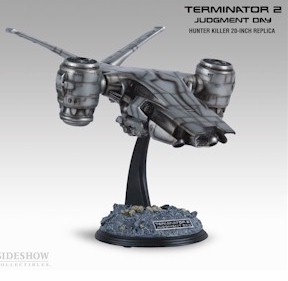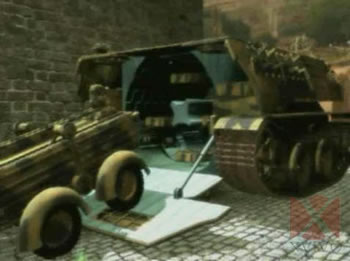Background:
Natural senses of both human and animal rescue personal are limited by range. Vision, auditory and olfactory senses heave served these teams well over the years, but as complex crisis’s, such as the earthquakes in Haiti, the Connecticut gas explosion and the constant fear of terrorist attack, become more labor intensive for search and rescue, human effort needs to be focused on concentrated areas where relief is critical. The elimination of ground teams is essential to expedite emergency response. Their replacements would be highly sensitive, aerial reconnaissance robots that quickly assess situations using AI perception to determine the most effective course of recovery.
I intend to concentrate on the sensory elements of the vehicle. Particularly I’ll focus on its perception of vision (and how it alternates through various spectrum views at different altitudes and environments); its atmospheric filter, for gauging oxygen versus dangerous vapor concentrations; its sonar and feedback for auditory and proprioception; and, lastly its power source and internal mechanics to charge functionality. Each of these characteristics will be demonstrated through the disaster situation presented in the animation. This will be a recovery exercise in which the robot (or perhaps several) coordinates an effort to establish contact with survivors and charts a rescue approach to save them.
Scene 1.1: Opens with aerial view of a remote chemical refinery at dawn. The camera first sees the sky scraping, cylindrical smoke stacks billow out think plumes of smoke over the surrounding tree line. Next it pans over workers strolling along catwalks to other ends of the station with trucks loading and unloading deliveries in the background. Everything feels like just another early morning.
Scene 1.2: We transition to a hallway where, from a worm’s eye view, employees are talking in the background near a vending machine. In our foreground is a pipe leading from ceiling to floor with a broken/leaky release valve. When we see a cigarette butt drop in front of our picture plane followed by a sudden flash of light.
Scene 2.0: Our refinery is not without hope. The explosion set off an emergency response signal triggering the release of the Emergency Assessment Reconnaissance Vehicle (EARV) from the fire station on base.
Scene 2.1: The protective hatches to EARVs shelter and repowering station lift back. The warm yellow sun piercing the timberline casts crisp shadows along its small, sleek body. We pan over its form from nose to tail while the whirl of its rotors can be heard. The pan stops overlooking the tail and the back of EARV, which is directly inline with explosion in the distance.
Scene 2.2: A below view of the EARV as it gradually takes over from its platform. Which then cuts to an ¾ aerial view of it as descends toward the explosion site that’s shrouded in black smoke.
Scene 2.3: A first person perspective of the EARV as it approaches the site. In order to visually cope with the new smoke in the atmosphere the EARV must change views. What starts as a clear picture of our scene, turns over to a thermal scan mode where hotspots are perceived in warm colors and white due to their degree of intensity, and everything else dark blue or black. We can see some distinguished shapes of bodies, which it counts and calculates position, and the core of fire inside the small hall-space where it detects no survivors.
Scene 2.4: EARV flies down for a closer view. We cut back-and-forth between a close-up of its superficial eye and its personal perspective while it assesses structural integrity of the plant’s damaged area. The camera follows it closer to survivors to assess the oxygen ratio in that area and filters audio to hear the survivors breath and moan.
Scene 3.0: While it’s assessing everything in view, a posterior sonar sensor picks up something from behind. A pipeline is collapsing directly over the aerial robot. As the pipeline begins to fall a wavy pattern appears around the EARV detecting peripheral movement and dives out of harms way.
Scene 3.1: Another shot of the personal view assessing structure.
Scene 3.2: As the EARV prepares to ascend from the site, it sends a remote signal to the approaching rescue vehicles to inform them of its findings. The EARV assessments will better prepare the emergency response crew about where to focus their attention by locating survivors, avoiding areas of structural weakness and knowing what kind of protective clothing and masks to wear.
Materials and Lighting:
Due to the complexity of the scene and all the elements involved I plan to use a variety of simple materials and lighting, and plenty of postproduction. Certain objects will receive more attention, such as the EARV, cigarette, and important elements of the chemical plant. There will be no bump maps; only color texture maps. Lighting will use the physical-sun shader with limited Final Gather and Global illumination. Character animations will remain simple since they’re either be obscured by depth or by the EARV’s vision.
In postproduction different effects will be used. Compositing different elements together; color hue shifts and illustrated elements will be brought into the scene, such as the assessment of structural integrity; and using alphas to make a rippling effect for the sonar. Plus, glows, depth blurs etc.
Resources:
I’ve looked into a number of difference sources for both realistic rescue vehicles and science fiction vehicles to use as a basis for my robot to make a reasonable, purposeful design. Additionally I’ve research chemical plant environments.
Attached are some images, video and links below.
Here are some links:
1. A chemical plant

2. Another chemical plant

3. Chemical plant at dusk

4. Chemical plant explosion

5. Generic chemical plant exterior

6. Terminator Hunter Killer

7. Example of thermal vision

8. Rescue robot

9. "Living with robots" (at 01:41)
10. CRASAR--Center for Robot Assisted Search & Rescue
11. Non-aerial designs
12.DOD: Darpa
No comments:
Post a Comment